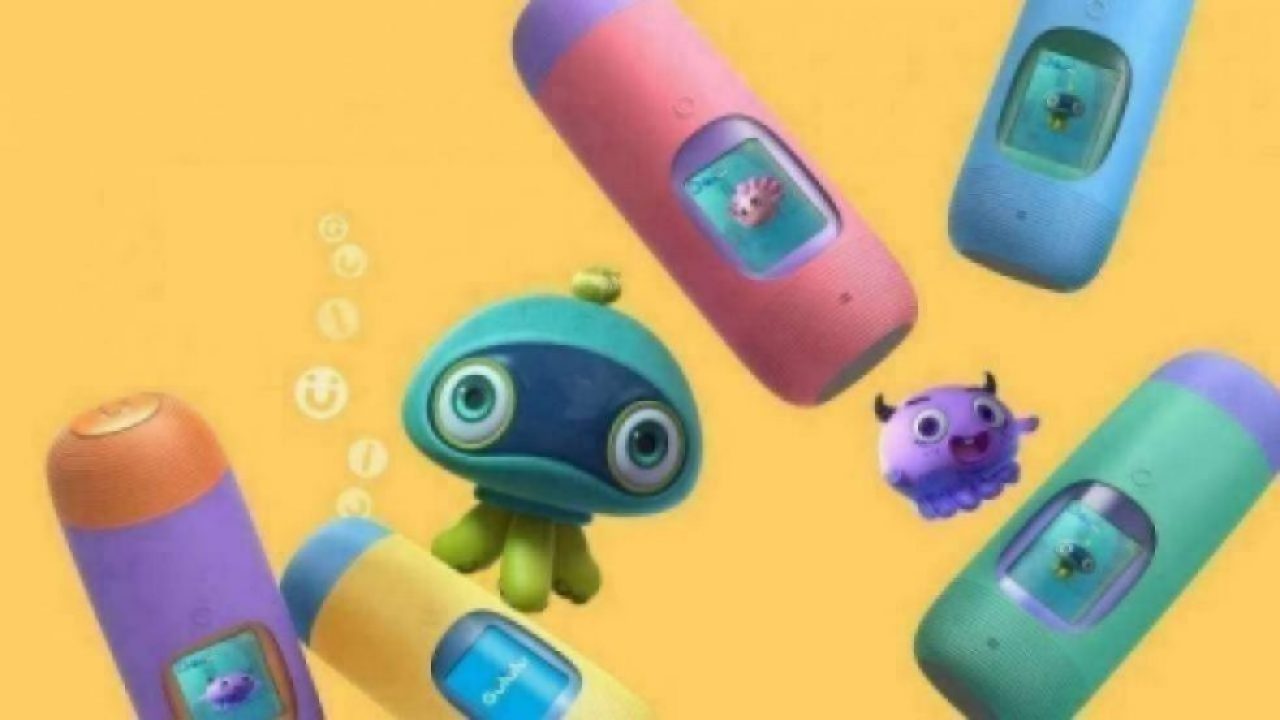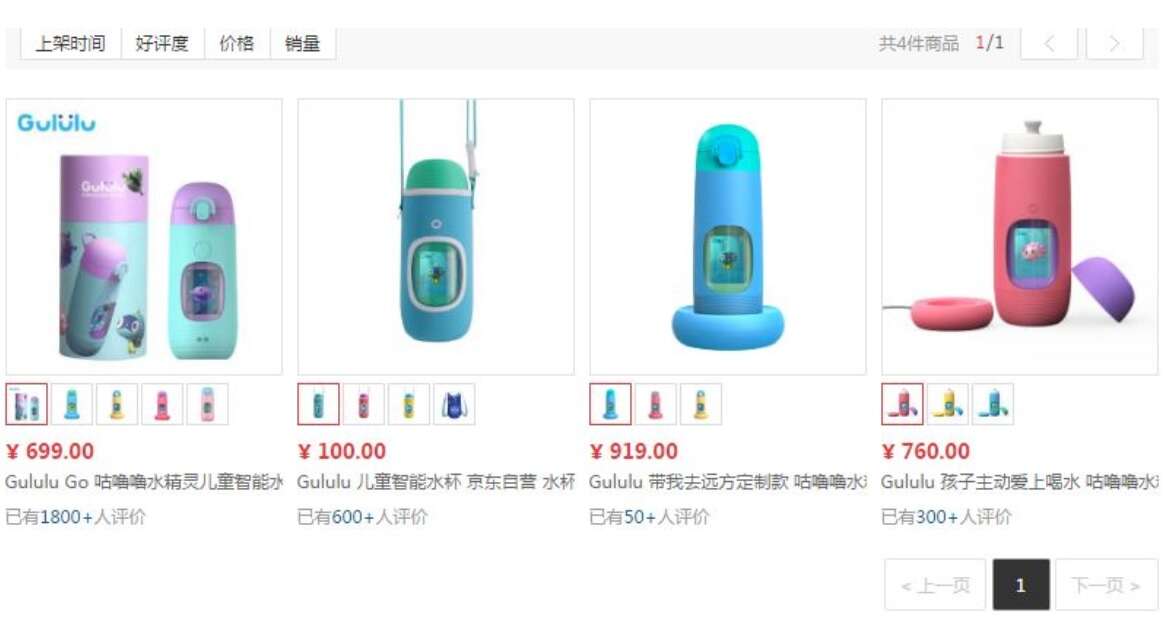Do You Need a $140 Smart Water Bottle?
Article By : Clover Lee

Smart water bottles are designed to entice children to drink more water, but they aren't all that smart, and the high price tag due to problems in the supply chain are limiting consumer adoption.
Nowadays, children often do not like to drink water, and that has become a great concern for some parents. As a result, it has opened up a business opportunity for children’s water bottles. And any old water bottle won’t do; it’s got to be a smart water bottle.
Products labeled “smart” are popping up en masse. At the same time, the price is multiplying. Recently, I found a children’s smart water bottle that sold for $140 (1,000 RMB). Is this meant to be an IQ tax?
This smart water bottle is equipped with basic functions such as a regular drinking reminder, daily water consumption planning, and water consumption records (connected to a mobile device app through Wi-Fi). It is also equipped with an electronic screen that has social interaction, as well as a music/story player and interactive game functions. It is like a small robot.
Why are smart water bottles for kids so popular?
Without exception, all standard water bottles designed for kids currently available on the market already come with many adorable and interesting features. However, most parents reportedly are only looking for a new water bottle designed to entice their children to drink more water within a short period of time.
How can we consistently guide children to drink water? This is not only a problem for parents, but also an issue for children’s water bottle manufacturers.
Against this backdrop, the Gululu smart water bottle for children was launched. This brand was founded in 2015 by Bowhead Technology, Inc. in China. Its first smart water bottles were released in the U.S. in 2016, followed by entry into the Chinese market in 2017. Currently, Gululu has stores on Chinese e-commerce websites Tmall.com and JD.com. Pricing for the Gululu water bottles range between $100 (699 RMB) and $130 (919 RMB) on JD.com. (In the U.S., they can be found for $119 or $129, depending on the model.)
Smart water bottle prices range between 600 and 1,000 RMB, which is equivalent to $85 to $140, at Gululu’s flagship shop on JD.com.
Many people have purchased the Gululu water bottle even though they are expensive. According to the JD.com’s data, the Gululu Go Fairy Interactive Portable Smart Children Water Bottle Blue, which costs $100 (699 RMB), has accumulated more than 1,800 user rankings and its approval feedback has reached 98%.
The Gululu water bottles are loved by children due to their comprehensive features and functions. Instead of being just a water bottle, it is more like a smart toy that tags along with children.
An electronic screen with an animated character is embedded in the cup. Children can interact with the animated character thanks to an integrated sensor. Every time the child drinks water, the character will “grow up” a bit. Or it will get “angry” when the child forgets to drink water or does not drink enough water. The smart functions continue to improve, and now these characters can speak English and tell stories. To users, it is no longer just a simple water bottle.
Recommended
一千元买个儿童智能水杯,是交智商税吗?
Although using this kind of water bottle might increase the frequency of drinking water, it does not mean that children are actually drinking water. Currently, these smart children’s water bottles are not completely smart, since they are not equipped with functions that analyze the liquid inside the bottle. This means that kids can put sugary soda inside the bottle, and the bottle assumes that the user is drinking water. Thus, kids are outsmarting their parents.
Moreover, when drinking water becomes a game, children are incentivized to drink water only from smart water bottles. Many children are beginning to refuse to drink water from normal water bottles. Meanwhile, the high price tag could induce a game of one-upmanship among children. These are issues that parents must pay attention to.
Adult smart water bottles lack ‘stickiness’
When an electronic product becomes a trend in the market, usually many teardown videos or articles on the product emerge. However, very little information is available when it comes to smart water bottles. I only managed to find one teardown article on the Cuptime smart water bottle.
Cuptime was first announced by Chinese manufacturer Moikit in 2013, and released to the market in mid-2014. The company’s first smart water product sold 110,000 bottles by the end of 2014.
The first generation of Cuptime positioned itself in the adult smart water bottle market. It can record the user’s volume of water consumption. It also schedules water drinking plans according to a user’s drinking habits, exercise and weather condition. It also reminds users to drink water regularly with beeps and LED flashing lights. These functions are realized by using a microcontroller, various sensors, a button cell battery, and Bluetooth 4.0.
|
Product |
Time of Announcement |
Official Price |
Solution |
Component Provider |
Component Types |
Model |
|
Cuptime |
Dec. 2013 |
399 RMB |
microcontroller + Bluetooth 4.0 + various sensors + button cell battery |
Energy Micro |
Microcontroller |
FEM32 |
|
TI |
Bluetooth SoC |
CC2541 |
||||
|
Bosch |
3-Axis Accelerometer |
BMA255 |
||||
|
Atmel (Microchip) |
Memory Chip |
AT24C64D |
||||
|
Holtek |
Touch IC |
BS801B |
||||
|
Maxim |
Power Chip |
MAX67XX |
||||
|
Graph by: ESMC; Source: Public information |
||||||
Components of the Cuptime smart water bottle.
Cuptime used relatively common and low-power consumer ICs to deliver intelligent functionality. These include the following:
- Records the user’s volume of water consumption.
- Determines if the user is drinking water or dumping water (if the user is dumping water out of the bottle, then the volume would not be recorded).
- Monitors the temperature of the environment and water (if the temperature of the water is too cool, suitable or too hot, it will remind the user with different colors of light).
- Automatically shuts down the water drinking reminder when the user leaves the water bottle.
Smart water bottles further quantify the user’s daily water intake by understanding their drinking habits with coordinating apps. However, what would the user do with such data? Currently, the data merely tells users whether their water drinking habit is healthy or not and does not provide additional feedback.
Hence, some users have begun to reconsider the smart trend. In fact, our lives do not need to over-emphasize intelligence. Real “smartness” should make people’s lives easier and not more complicated.
As smart appliances and products started to become trendy, some otherwise inconceivable smart products also started to emerge. They include smart egg trays, smart belts, smart salt shaker bottles, smart forks, etc.
The smart egg tray tells you how many eggs are left in the refrigerator. A smart belt can charge your mobile phone. A smart salt shaker bottle can track how much salt you have taken, while a smart fork monitors how many times you chew for each bite and how long it takes to finish a meal.
Apparently, the data provided by these products did not make much sense. However, due to their “smart” functions, their prices skyrocketed. For example, a smart salt shaker costs as much as $85 (600 RMB)!
So, do smart water bottles have value? Some consumers responded that they use smart water bottles mainly for drinking water. When they first bought the product, due to curiosity, they would consistently use all the functions, but later on, they just used it like an ordinary cup. This tells us that adult smart water bottles need more stickiness in their performance.
How did they come up with the price of nearly $140 (1,000 RMB)?
Although more functions can make the product more attractive, the quality of the bottle itself is also worth paying attention to. The Gululu smart water bottle does not have a heat-preserving function and cannot be filled with hot water. Is it reasonable for a water bottle that cannot hold hot water costs $140?
According to the teardown of the Cuptime water bottle, we can tell that these smart water bottles use commodity low-power electronic components. Thus, the chip cost alone should not take up a large proportion of the overall manufacturing cost.
Together with other materials, even by using bisphenol A (BPA)-free materials that meet U.S. FDA safety standards, the material cost will not be prohibitively high. Then, why does it cost so much more than an average water bottle? Besides having features due to its “smart” functions and features, another reason is the high defective rate due to an industrial supply chain that is not yet fully developed.
According to Xiaoliang Li, founder and CEO of Moikit, the first mass production order of Cuptime was 10,000 bottles and nearly 40% of them were defective. Technically, the most difficult part in manufacturing was its supersonic plastic welding process, he noted.
Currently, given that smart hardware and appliances are developed separately via independent industrial supply chains, the manufacturer must combine the two manufacturing processes into one when developing a smart product. This has not only made the development process more difficult, but it has also increased the defect rate.
The smart water bottle industry thus far has only opened up a small part of the market. Without the participation of conventional water bottle manufacturers, it is difficult to change the overall market just on the strength of entrepreneurial teams.
At present, most smart water bottle entrepreneurs insist on developing their own applications and are unwilling to open API to application developers. The limited app development environment tends to slow down the development of the entire industry.
How can value be realized?
Currently, demands on smart hardware appliances have yet to shake the market, and is still at the initial stage of development. Different industries have not developed unified norms and standards, while the industrial supply/production chain also has not matured yet.
Some designers might fantasize that once IoT has developed to a certain level, all smart hardware appliances can be linked through a digital network. However, current smart hardware appliances most often operate in a “standalone” manner.
For the smart water bottle, its low production volume and high cost are major reasons that its development remains somewhat limited.
Although many smart water bottle brands were rolled out into the market, most ended up being just a flash in the pan. On one hand, not every smart water bottle has kept up with high-quality design standards. On the other hand, the look and feel of these products is strikingly too similar.
They also fail to meet the expectations of IoT applications. “Being linked” does not guarantee that the bottle’s access to Wi-Fi allows users to compare with their water consumption tracking with others users. Connected devices should be about linking people, processes, and data together to make such connections more relevant and more valuable.
When an insurance company, family doctor, or health consultant can provide services to you according to your water drinking data, the value of the smart water bottles might be further realized.
– Clover Lee is an assistant industry analyst at ESM China, an AspenCore Media publication, and a sister publication of EE Times. Lee covers market and supply chain trends in automotive electronics, artificial intelligence, consumer electronics and other fields.
Subscribe to Newsletter
Test Qr code text s ss



